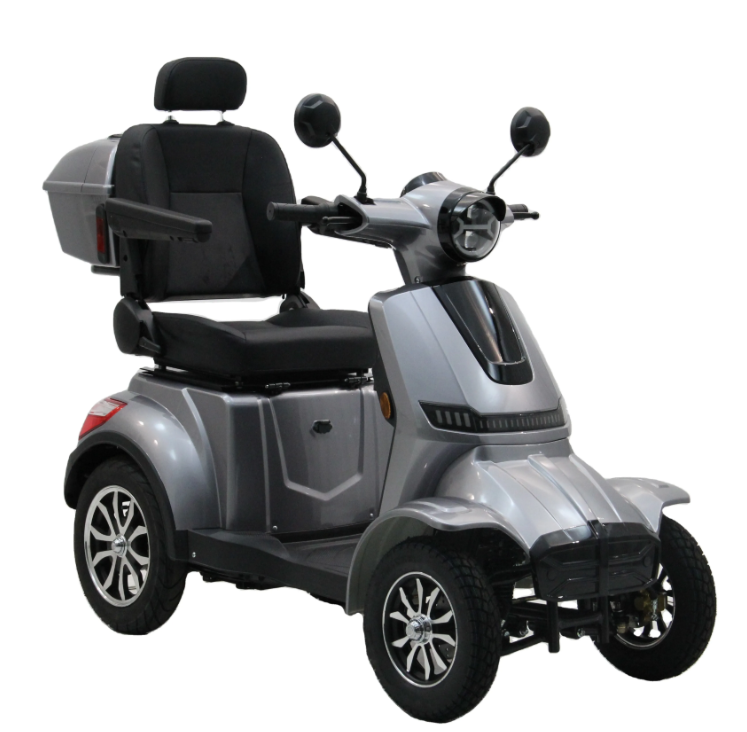Understanding the Range Capacity of Varying Batteries in Mobility Scooters
- mobilityscootersbl
- Jan 7
- 4 min read

Mobility scooters are an indispensable tool for many individuals with mobility challenges, offering them the freedom to travel independently. One of the most important considerations when choosing a mobility scooter is the battery range capacity, as it directly influences how far you can travel before needing to recharge. But how does the type and capacity of a battery affect this range? In this post, we'll explore the different types of batteries used in mobility scooters and how they impact the scooter's range.
Types of Batteries in Mobility Scooters
Mobility scooters typically use two types of batteries: lead-acid batteries and lithium-ion batteries. Each comes with its own set of characteristics, including how they affect the overall range of the scooter.
1. Lead-Acid Batteries
Lead-acid batteries have been the traditional choice for mobility scooters for decades. They're cost-effective, reliable, and widely available, but they do come with some limitations.
Key Features of Lead-Acid Batteries:
Voltage: Lead-acid batteries generally come in 12V and are often paired in sets of two to provide 24V, which is typical in many mobility scooters.
Capacity: The range varies from 12 Ah to 35 Ah, with larger capacities providing a longer ride distance.
Charging Time: Lead-acid batteries require around 8-12 hours for a full charge, which can be quite inconvenient for users who need to use their scooter frequently.
Lifespan: Typically, lead-acid batteries last 1-2 years depending on usage and maintenance.
Impact on Range: Lead-acid batteries generally offer a range of about 10 to 20 miles on a full charge. However, this can vary depending on factors like the battery’s age, the terrain, the rider's weight, and how often the scooter is used.
2. Lithium-Ion Batteries
Lithium-ion batteries are becoming increasingly popular in modern mobility scooters due to their advantages in weight, longevity, and efficiency.
Key Features of Lithium-Ion Batteries:
Voltage: Lithium-ion batteries are typically 12V to 24V, similar to lead-acid, but they tend to have higher energy density.
Capacity: They typically range from 10 Ah to 30 Ah, but their efficiency means they can often provide a longer range compared to lead-acid batteries with the same capacity.
Charging Time: Lithium-ion batteries charge much faster, typically taking between 4-6 hours for a full charge.
Lifespan: Lithium-ion batteries last 3-5 years and can endure more charge cycles than lead-acid batteries.
Impact on Range: Lithium-ion batteries can offer a range of 20 to 40 miles on a full charge, making them ideal for individuals who need to travel longer distances. Their efficiency, combined with their ability to retain more charge over time, makes them a top choice for users who need reliability and better overall performance.
Factors Affecting the Range of Mobility Scooters
Regardless of the battery type, there are several factors that influence how far a mobility scooter can travel on a single charge:
1. Rider’s Weight
A heavier rider requires more energy to move the scooter, which can decrease the overall range. Most scooters are rated for weight limits between 250 and 500 pounds, but riders should keep in mind that a higher weight could lead to quicker battery depletion.
2. Terrain
The type of terrain you navigate plays a significant role in battery usage. Uphill terrain or rough roads require more power from the scooter, thus reducing the range. Scooters on smoother, level ground can go further on the same charge.
3. Speed
Driving at higher speeds uses more battery power, so if you need the scooter to go longer distances, it’s best to maintain a moderate speed.
4. Battery Age and Maintenance
As a battery ages, its capacity naturally declines. This means that older batteries will not hold a charge as effectively as new ones, leading to reduced range. Proper maintenance, such as avoiding deep discharges and keeping the battery clean, can help extend its lifespan.
Calculating Range Based on Battery Size
The general rule is that the larger the battery capacity, the longer the range. Here’s a rough guide on how the battery's capacity can affect range:
12 Ah Battery (Lead-Acid): Typically offers 10-15 miles of range.
20 Ah Battery (Lead-Acid or Lithium-Ion): Typically offers 20-30 miles of range.
30 Ah Battery (Lithium-Ion): Can provide 35-40 miles or more, depending on other factors like speed and terrain.

How to Maximize Your Scooter's Range
If you want to get the most out of your mobility scooter’s range, here are some tips to help you:
Charge Your Battery Regularly: Avoid completely draining the battery before recharging it, as this can reduce its lifespan. It’s best to charge the scooter after each use, especially if you’re traveling long distances.
Monitor Tire Pressure: Low tire pressure can increase the resistance, draining the battery faster. Ensure that the tires are inflated to the recommended pressure.
Use Eco Mode (If Available): Many scooters offer an eco mode, which reduces power consumption and extends the range.
When choosing a mobility scooter, understanding the impact of the battery type and size on range is crucial to making an informed decision. Lead-acid batteries are budget-friendly but offer a shorter range, while lithium-ion batteries are more efficient and can go much farther on a single charge. Consider factors like rider weight, terrain, and your typical travel distance to select the right battery for your needs. With the right choice, your mobility scooter can keep you on the move and offer greater independence for years to come.




Comments